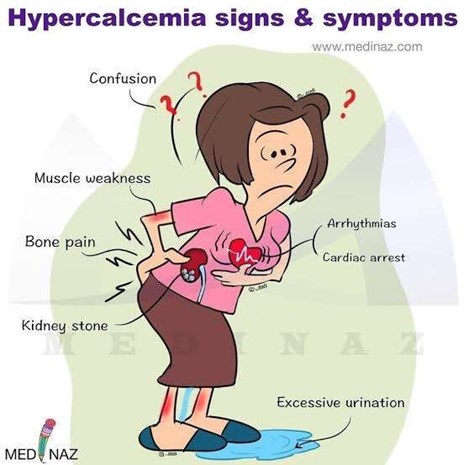A client is diagnosed with syndrome of inappropriate antidiuretic hormone (SIADH).
The nurse would monitor the client for which of the following electrolyte imbalances?
Hyponatremia.
Hypernatremia.
Hyperkalemia.
Hypokalemia.
The Correct Answer is A

SIADH is a condition in which your body makes too much antidiuretic hormone (ADH), which controls how your body releases and conserves water.
SIADH makes it harder for your kidneys to release water and causes the levels of electrolytes, like sodium, to fall due to water retention.
This leads to hyponatremia, which is when you have low levels of sodium in your blood.
Choice B is wrong because hypernatremia is when you have high levels of sodium in your blood.
This can occur due to dehydration, excessive salt intake, or kidney problems.
Choice C is wrong because hyperkalemia is when you have high levels of potassium in your blood.
This can occur due to kidney failure, acidosis, or certain medications.
Choice D is wrong because hypokalemia is when you have low levels of potassium in your blood.
This can occur due to vomiting, diarrhea, diuretics, or alkalosis.
Nursing Test Bank
Naxlex Comprehensive Predictor Exams
Related Questions
Correct Answer is ["B","C","D"]
Explanation
Hypercalcemia is a condition in which the calcium level in the blood is above normal.

This can cause various symptoms, such as confusion, constipation, and bradycardia (slow heart rate).
These are the clinical manifestations that the nurse would expect to observe in a client with hypercalcemia.
Choice A is wrong because muscle spasms are not a common symptom of hypercalcemia.
In fact, hypercalcemia can cause muscle weakness and pain.
Choice E is wrong because polyuria (excessive urination) is not a direct symptom of hypercalcemia, but rather a result of kidney problems caused by hypercalcemia.
Hypercalcemia can make the kidneys work harder to filter the excess calcium, leading to dehydration and thirst.
However, this does not necessarily mean that the client will have polyuria.
Normal ranges for calcium levels in the blood are 8.5 to 10.2 mg/dL (milligrams per deciliter) or 2.1 to 2.6 mmol/L (millimoles per liter).
Correct Answer is A
Explanation
Acute renal injury (ARI) is a term for a reversible syndrome that results in decreased glomerular filtration rate (GFR) and oliguria. GFR is a measure of how well the kidneys filter blood and oliguria is a condition of producing less than normal amounts of urine.
Choice B is wrong because chronic renal injury (CRI) is not a reversible syndrome, but a progressive loss of kidney function over months or years.
Choice C is wrong because end-stage renal disease (ESRD) is not a reversible syndrome, but a condition where the kidneys have lost most or all of their function and dialysis or transplantation is required.
Choice D is wrong because acute tubular necrosis (ATN) is not a term for a syndrome, but a specific type of acute kidney injury that involves damage to the tubules, the part of the nephron that reabsorbs water and solutes from the filtrate.
Whether you are a student looking to ace your exams or a practicing nurse seeking to enhance your expertise , our nursing education contents will empower you with the confidence and competence to make a difference in the lives of patients and become a respected leader in the healthcare field.
Visit Naxlex, invest in your future and unlock endless possibilities with our unparalleled nursing education contents today
Report Wrong Answer on the Current Question
Do you disagree with the answer? If yes, what is your expected answer? Explain.
Kindly be descriptive with the issue you are facing.
